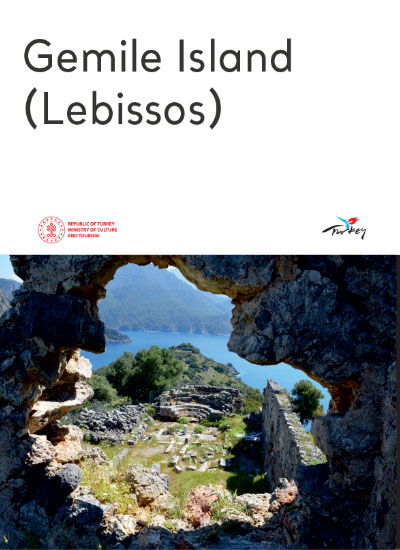Gemiler Island is situated across Soğuksu Bay, in the vicinity of the Blue Lagoon (Symbolon). Transportation to the island is provided from Gemiler Bay, in the vicinity of Kayaköy. The island is home to four church ruins, grave structures and medieval settlement ruins. The island's civil architectural structures include houses and cisterns. Some of the ruins can also be observed under water. It is thought that the island was inhabited in the 5th to 7th centuries and abandoned in the 7th century following Arab raids. The churches on the island have been numbered during the excavations, with the most magnificent church numbered as church number 3. This is located at the highest point of the island and has a basilica plan. In light of the churches on the island and those at Symbolon (Blue Lagoon) in the vicinity, it can be postulated that this area may have served as a bishopric centre. The concentration of religious structures, including chapels, basilicas and tombs, within and in the vicinity of the island, suggests that the island became a religious site in the 5th to 7th centuries. The presence of dense architectural structures on the island, despite the lack of drinking water sources, remains a mystery. The cisterns on the island indicate that rainwater was probably stored. The island's attraction is thought to be due to its frequented by Christians who were travelling for pilgrimage. A fresco on the abscissa of the church number 2 on the island reads “Hossios Nikolaos”. Saint Nicholas of Sion was born and lived in Sion (Alacahisar) near Demre in Antalya. The church is dedicated to him. Furthermore, Gemiler Island was also known as St. Nicholas Island in the Middle Ages.
FETHİYE GEMİLE ISLAND ARCHAEOLOGICAL SITE

